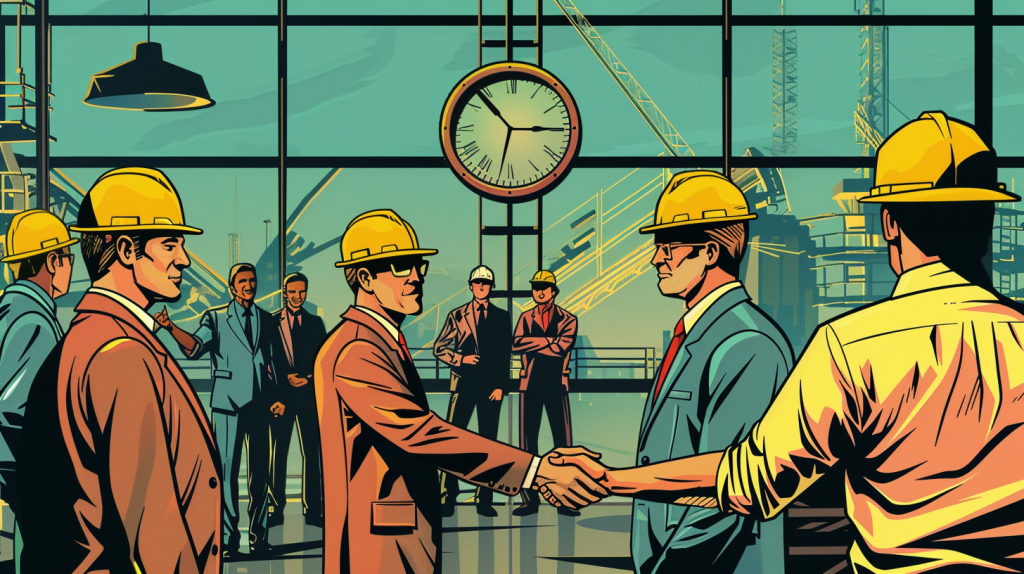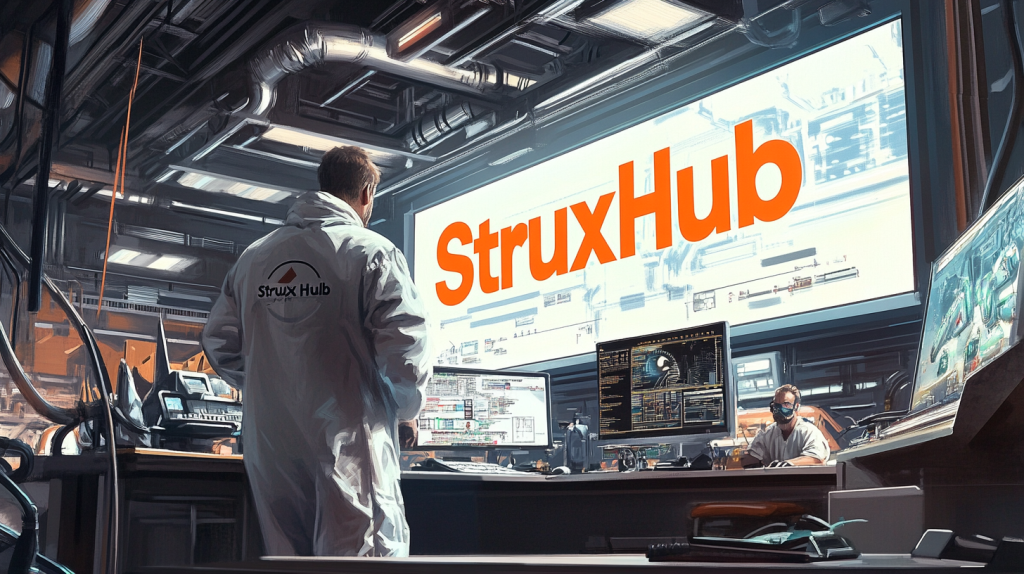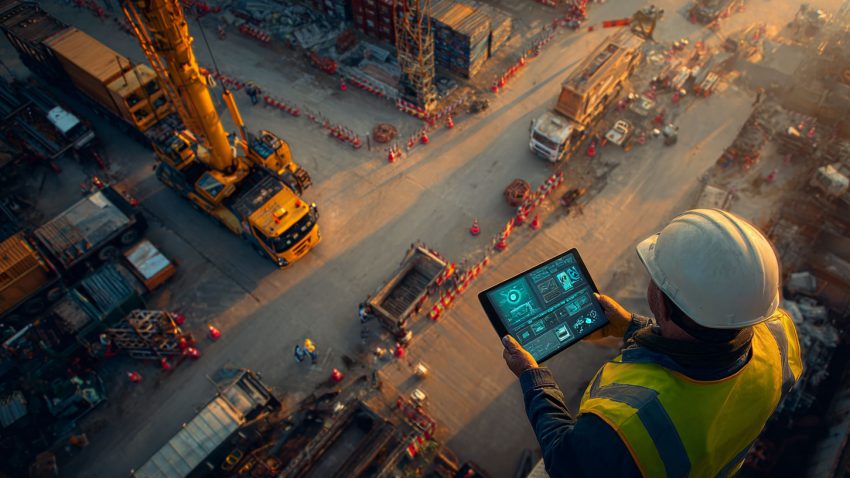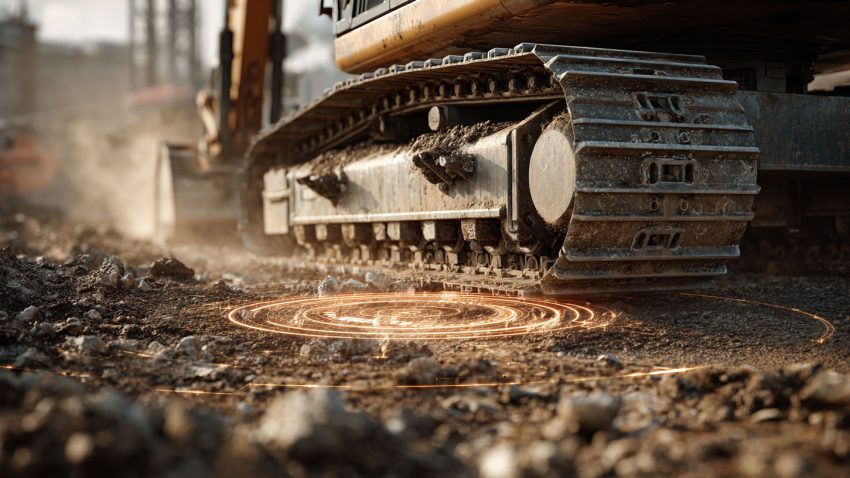Richland Parish Data Center (Meta) Sets a New Standard for Hyperscale Construction Projects
Table of Contents:
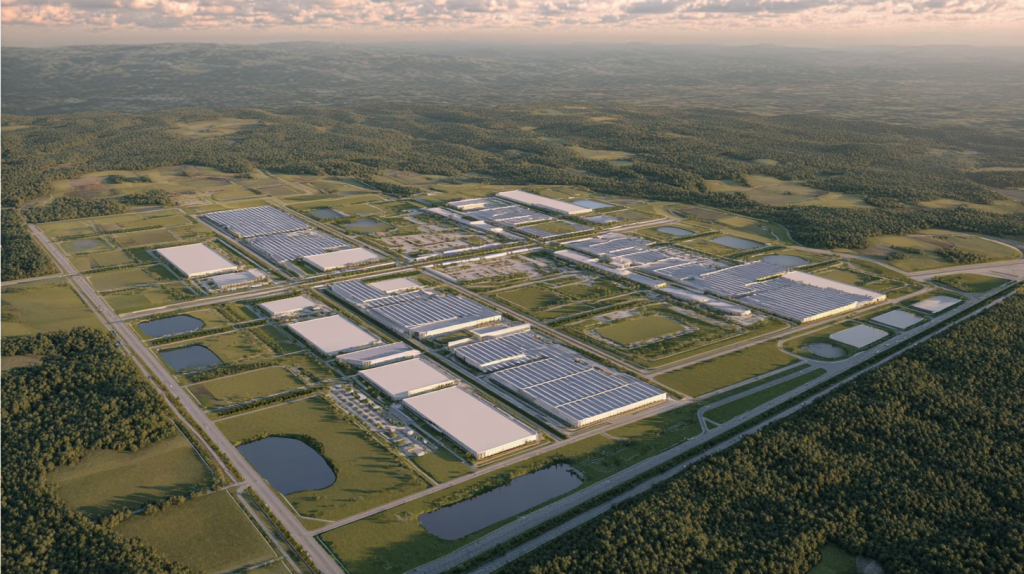
What Makes the Richland Parish Data Center One of the Most Ambitious Construction Projects in the U.S.?
The Richland Parish Data Center, backed by Meta, isn’t just another large build—it’s a showcase of what modern hyperscale construction looks like when speed, scale, and precision align. Located in Louisiana and spanning millions of square feet, this data center project pushes the boundaries of what construction teams can deliver in record time, under extreme technical demands, and with a laser focus on operational readiness from day one.
Located on the 2,250-acre former Franklin Farm megasite between Rayville and Delhi—roughly 30 miles east of Monroe—the campus is planned to span over 4 million square feet (approximately 371,600 square meters)
What makes this project particularly impressive is how quickly ground was broken after the announcement. Meta’s public unveiling was followed almost immediately by active site work—proof of a fully pre-planned, meticulously coordinated execution model. The facility will house rows of servers that power Meta’s platforms globally, which means there’s no room for error, delays, or post-construction surprises.
From infrastructure upgrades to stormwater planning and power redundancy, every component of the project reflects the scale and stakes of mission-critical construction. Massive crews, specialized contractors, and complex delivery schedules all operate in parallel—setting a new benchmark not only for data centers but for how large-scale construction can be executed across any vertical.
Top Benefits of Projects Like Richland Parish
- Sets new standards for design-to-execution speed
- Demonstrates preconstruction planning at a world-class level
- Raises the bar for quality, safety, and operational readiness
- Attracts top-tier subcontractors and specialty vendors
Best Practices Behind the Build
- Lock project phases and logistics before public announcement
- Pre-coordinate MEP, civil, and security scopes concurrently
- Use fast-track delivery methods that scale with crews
- Align trades around shift-based sequencing and milestone goals
The Richland Parish project isn’t just a data center—it’s a blueprint for how hyperscale builds should be managed moving forward.
How Hyperscale Construction Is Redefining the Speed and Complexity of Mega Builds
Hyperscale construction is not a trend—it’s a new category of building that’s reshaping how the industry defines large. Data centers, distribution hubs, and advanced manufacturing facilities now demand delivery timelines and performance metrics that would have been unthinkable just a decade ago. These aren’t just large projects—they’re ecosystems that need to be operational before the last crane leaves the site.
What sets hyperscale apart is the sheer density of scope. Electrical and mechanical systems are on a level comparable to hospitals or airports. Structural concrete is often poured around the clock. Internet and power connectivity require multi-agency coordination. And while the shell might go up in months, the real complexity lies in what happens inside the walls—cooling, power, fire systems, and server-ready fit-outs.
Speed is no longer negotiable. Owners expect schedules to move in weeks, not months, with multiple scopes running in parallel. This creates an urgent need for clarity, field coordination, and real-time problem-solving. Traditional build-and-wait cycles can’t keep up.
The rise of hyperscale is reshaping expectations for every project stakeholder—from architects to field supers—and it’s forcing the industry to adopt tools, processes, and partnerships that match the scale of the challenge.
Top Benefits of the Hyperscale Construction Model
- Delivers critical infrastructure faster to meet tech demands
- Encourages innovation in preconstruction and sequencing
- Provides consistent templates for repeat builds
- Builds confidence with clients who require operational certainty
Best Practices Emerging from Hyperscale Projects
- Preassemble modular components offsite where possible
- Use zone-based turnover to phase commissioning faster
- Integrate vendor scopes early during design and procurement
- Keep crews aligned through centralized scheduling dashboards
Hyperscale projects are redefining what’s possible—not just in construction speed, but in how deeply planning and execution must align from day one.
Why Owners Like Meta Are Pushing for Faster, Smarter, More Repeatable Project Delivery
Tech giants like Meta operate on global timelines that don’t wait for permitting delays or inefficient trade coordination. They require infrastructure that’s not only functional but replicable—across multiple states, climates, and jurisdictions. The Richland Parish project exemplifies this new wave of owner-driven construction: fast, scalable, and relentlessly data-driven.
Owners are now setting the pace. They come to the table with their own standards, BIM models, logistics playbooks, and design systems already in place. In many ways, they operate like developers and contractors rolled into one. Their goal is not just to finish the job—it’s to replicate it seamlessly at the next site with minimal reinvention.
To make that possible, contractors must adapt. It’s no longer about building from a blank slate, but about integrating into a proven system of project delivery. This means tighter compliance with digital documentation, more proactive coordination among vendors, and far more real-time visibility into schedule progress and site readiness.
Meta’s approach reflects this shift. From utility planning to turnover sequencing, everything is coordinated, standardized, and tracked. It’s not just about building quickly—it’s about building smart, over and over again.
Top Benefits of Owner-Driven Delivery Standards
- Reduces risk by minimizing scope creep and field RFIs
- Improves forecasting by leveraging repeatable models
- Enhances trade performance with clear, consistent expectations
- Drives collaboration through digital-first construction workflows
Best Practices to Align with Owner Expectations
- Adopt digital documentation standards from day one
- Build processes around zone-based commissioning and early handover
- Engage owners during weekly pull planning and milestone reviews
- Track labor, material, and equipment metrics with transparency
Meta and other hyperscale owners are transforming the industry—not just through size, but by reshaping how construction is executed at scale.

How Mega Construction Projects Are Changing Field Leadership and Coordination
As construction projects grow in size, speed, and complexity, the role of field leadership is evolving fast. On mega builds like the Richland Parish Data Center, the superintendent’s role goes far beyond managing subs and walking the site—it’s about orchestrating a nonstop flow of work across multiple trades, shifts, and logistics zones with real-time clarity.
Field leaders must now manage entire jobsite ecosystems. Instead of overseeing a few trades at a time, they’re responsible for hundreds of workers operating in parallel, often across phased work zones or 24/7 schedules. Precision matters more than ever. A missed delivery or misaligned inspection can ripple across the site and affect dozens of other dependencies.
What’s changed most is the level of coordination required. Trade partners, vendors, inspectors, and safety teams all need instant updates on what’s happening where. Field leaders must track material staging, monitor progress against the schedule, and communicate job-critical changes without delay. Old systems like whiteboards, clipboards, or siloed spreadsheets can’t keep up.
This shift has created new demands for technology adoption and collaborative tools—platforms that support live updates, mobile access, and fast decision-making. Mega projects need mega coordination, and that starts with how field leaders work day-to-day.
Top Benefits of Evolving Field Leadership Models
- Empowers supers and foremen to lead at scale
- Reduces project risk through better cross-trade coordination
- Speeds up response to field issues with real-time visibility
- Builds stronger accountability across all jobsite partners
Best Practices for Field Coordination on Mega Builds
- Break jobsites into zones and assign lead coordinators per area
- Use mobile tools for daily task updates and issue tracking
- Review live dashboards during shift huddles and handovers
- Tie schedule milestones to field progress reporting
Field leadership on mega builds isn’t just about keeping things moving—it’s about building a jobsite rhythm that supports predictable, high-velocity execution.
Why Construction Tech Is Critical to Delivering at Hyperscale
You can’t run a hyperscale project on paper. The sheer volume of trades, vendors, inspections, and milestones requires systems that scale as quickly as the project itself. That’s why the most successful mega builds now run on connected construction tech—platforms that unify scheduling, documentation, communication, and reporting in real time.
In projects like the Richland Parish Data Center, digital tools are used to coordinate everything from utility planning to MEP commissioning. Submittals, RFIs, and inspections are logged digitally. Work zones are mapped and assigned through digital dashboards. Daily reports aren’t handwritten—they’re submitted from tablets in the field and viewed instantly by the office.
This connected approach accelerates decision-making and ensures that no update gets lost. It also helps hold teams accountable, because every update is time-stamped, geo-tagged, and assigned to the right party. Most importantly, it reduces the lag between problem and resolution—a critical factor on projects that can’t afford delays.
Construction tech isn’t just a support tool—it’s now essential infrastructure for any hyperscale build.
Top Benefits of Construction Tech at Scale
- Speeds up decision-making and issue resolution
- Keeps all project data organized and accessible in real time
- Improves trade coordination with shared task visibility
- Strengthens QA/QC tracking from day one
Best Practices for Using Tech on Hyperscale Projects
- Onboard trades early to digital platforms during mobilization
- Standardize task tracking, reporting, and daily logs
- Connect schedules, permits, and inspections through a single system
- Use mobile tools to close the gap between office and field
When used right, construction tech becomes the nervous system of the project—keeping teams informed, aligned, and moving at hyperscale speed.
How Richland Parish Reflects the Future of Mission-Critical Construction
The Richland Parish Data Center isn’t just impressive—it’s instructive. It shows what the future of mission-critical construction looks like: fast, precise, scalable, and deeply coordinated. Whether it’s building data centers, manufacturing campuses, or secure research facilities, this type of construction will only become more common in the coming decade.
Mission-critical builds demand more than just square footage. They require uptime guarantees, utility redundancy, cybersecurity compliance, and operational certification. They can’t afford delays—or surprises. That’s why these projects are now delivered with aggressive schedules, hardened QA/QC protocols, and fully integrated teams from precon through commissioning.
What makes Richland Parish a standout is how tightly everything is connected. From utility installation to mechanical fit-out, every milestone is coordinated with next steps in mind. Zones are turned over in phases. Equipment is tested before the building is even fully enclosed. And trades work together across the clock—not just in parallel, but in sync.
This model is no longer optional. As demand for cloud infrastructure and secure data processing grows, mission-critical projects will need to run faster and smarter. Richland Parish is proof that it can be done—and a glimpse of what’s coming next.
Top Benefits of Mission-Critical Delivery Models
- Ensures readiness for operations the moment construction ends
- Improves build quality with pretested systems and phased turnover
- Reduces risk of commissioning delays and integration issues
- Builds repeatable, scalable templates for global deployment
Best Practices from Richland and Other Top Builds
- Use phased zone turnover with early inspections and testing
- Align contractors and vendors with strict pre-task planning
- Track every system from delivery through commissioning
- Keep the owner involved throughout the build—not just at handover
Richland Parish shows that the future isn’t just faster—it’s smarter. And the construction teams who adapt to this standard now will be the ones leading it tomorrow.
How StruxHub Supports Hyperscale Construction and Mission-Critical Execution
In hyperscale construction, clarity and speed aren’t just helpful—they’re essential. StruxHub was built with this environment in mind. It gives general contractors, field teams, and project managers a real-time coordination platform designed to match the intensity of modern mega builds.
While hyperscale owners like Meta drive fast-track schedules, it’s the field teams who turn that pressure into daily execution. StruxHub simplifies that process by organizing tasks, RFIs, punch items, and daily reports all in one place—so nothing falls through the cracks. It helps contractors reduce miscommunication, track progress by zone, and react quickly when something threatens the schedule.
StruxHub also supports phased turnover and mission-critical QA/QC workflows. Zones can be tracked independently, inspections logged digitally, and milestone checklists verified in real time. This is exactly what hyperscale owners expect: transparency, accountability, and speed.
On a high-stakes site like the Richland Parish Data Center, StruxHub gives teams the structure they need to keep momentum high and surprises low. From pre-task planning to final handoff, it’s the digital command center that keeps crews aligned, informed, and moving forward—hour by hour, zone by zone.

StruxHub
Experience the power of StruxHub today and witness firsthand how it can revolutionize your construction operations.
FAQ
What is hyperscale construction and how is it different from traditional projects?
Hyperscale construction refers to extremely large-scale building projects that prioritize speed, scalability, and repeatability—often for technology or infrastructure providers. These projects include massive data centers, distribution hubs, or advanced manufacturing facilities and are typically developed by companies like Meta, Amazon, or Google.
What sets hyperscale apart is the pace. These builds are often on fast-track schedules, with multiple scopes running in parallel, and turnover happening by zone or phase rather than waiting for a full project completion. Design standards are already defined, permitting is often pre-negotiated, and vendor partners are locked in before ground is broken.
Traditional projects typically move in a more linear fashion—design, bid, build, inspect. Hyperscale projects compress these phases through aggressive planning and digital-first coordination. Success hinges on tight collaboration, field-ready execution, and near real-time decision-making.
For superintendents and contractors, hyperscale builds demand a different mindset: flexibility, proactive coordination, and tools that scale. You’re not just building one structure—you’re building a model that may be repeated across dozens of sites. That’s a massive opportunity, but also a big challenge if your systems aren’t built to move at that pace.
Why are tech companies like Meta driving innovation in construction?
Tech companies operate on aggressive growth timelines. Their infrastructure—like data centers or content delivery hubs—needs to be up and running fast to meet business demand. Because of this, they’re not content to rely on traditional construction timelines or workflows. They expect construction to work like the rest of their operations: scalable, data-driven, and repeatable.
Meta is a prime example. The company has standardized its data center designs across sites, pre-qualifies vendors globally, and demands real-time reporting from its field teams. Every decision is backed by a playbook. Every milestone is tracked digitally. These expectations are now influencing how the entire construction industry operates.
In return, tech companies offer stability, volume, and innovation. Contractors who align with their systems gain long-term partnerships and valuable exposure to next-generation workflows.
This trend is accelerating. More owners—tech or not—are adopting Meta’s playbook to drive faster delivery, lower risk, and better quality. Contractors who evolve now will stay competitive in this new era of construction.
What challenges come with hyperscale and mega construction?
The biggest challenge in hyperscale construction is coordination. Dozens of trades, compressed timelines, complex systems, and phased turnover all need to sync perfectly. One delay can trigger a domino effect across the jobsite.
There’s also the challenge of scalability. Systems that work on smaller builds—like paper logs, email chains, or weekly update meetings—fall apart when hundreds of workers are on site and daily decisions need to be made on the fly.
Labor availability is another issue. Hyperscale projects often require shift work, deep benches of skilled labor, and consistent vendor performance over long timelines. Without proper planning and real-time task management, teams risk burnout, safety lapses, or trade stacking.
Lastly, there’s documentation. Hyperscale owners expect everything to be tracked—RFIs, QA/QC, inspections, deliveries, and delays. If your reporting process is manual or disconnected, you’ll quickly fall behind and risk losing trust.
Solving these challenges requires more than experience. It demands tools and workflows that are built to scale—and teams who are trained to lead with speed, clarity, and consistency.
What makes a hyperscale data center project like Richland Parish unique?
Richland Parish represents the new normal in mission-critical construction. It’s massive in footprint, but even more impressive in coordination. The project was mobilized quickly after announcement, built with phased turnover in mind, and aligned closely with Meta’s global standards for data center delivery.
What’s unique is the execution. Every scope—MEP, civil, security, IT—is working in lockstep. Field teams run on fast-paced cycles with pre-defined milestone targets. The project includes power redundancy, cooling infrastructure, and secure data handling—all delivered with near-zero tolerance for schedule drift.
Another standout is the use of digital tools to track and coordinate everything. From daily logs to commissioning readiness, the project runs on real-time visibility. That’s the only way to keep such a massive, high-stakes job moving forward without friction.
Richland Parish sets a bar that other mission-critical builds will need to meet. If you want to build for hyperscale clients, it’s time to study what they’re doing here—and get ready to match it.
How can construction teams prepare for future hyperscale work?
Preparation starts with mindset and tools. Teams that succeed on hyperscale projects are flexible, digitally fluent, and highly coordinated. That means adopting systems that let you track work in real time, share updates instantly, and avoid bottlenecks before they grow.
Start by training your field teams to use digital tools—not just in the trailer, but in the field. Get them comfortable with mobile reporting, map-based updates, and schedule dashboards. The faster they can spot and solve problems, the more value you’ll deliver to hyperscale owners.
Next, focus on process. Standardize how you handle daily reports, milestone tracking, and phased turnover. Build templates, run playbooks, and tighten your pre-task planning. This makes onboarding smoother and builds client trust.
Finally, lean into transparency. Hyperscale clients want visibility. Share updates proactively. Track performance by trade. Log every RFI, inspection, and closeout checklist. The more organized and visible your data, the more competitive you’ll be.
Teams that prepare now will be ready to lead tomorrow’s biggest—and fastest—projects.
